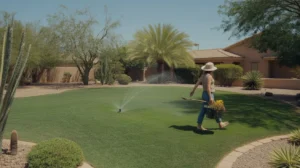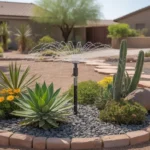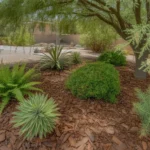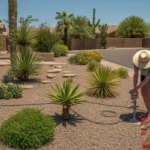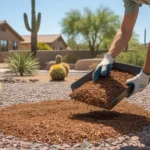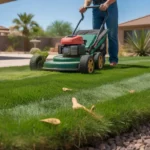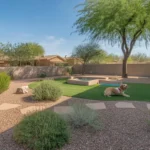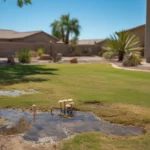Maintaining a lush, green lawn in Mesa’s arid climate can feel like an uphill battle, especially during the scorching summer months. But with the right strategies and a bit of know-how, you can transform your dry, struggling yard into a verdant oasis that defies the desert heat. By focusing on soil health, choosing resilient grass varieties, and adopting smart watering practices, you’ll be well on your way to enjoying a thriving summer lawn that’s the envy of the neighborhood.
Reviving Dry, Compacted Soil
The foundation of any healthy lawn is the soil beneath it. In Mesa, our native soil tends to be dry, compacted, and lacking in organic matter. This makes it difficult for grass roots to penetrate deeply and access the moisture and nutrients they need to thrive. To give your lawn a fighting chance, you’ll need to focus on improving soil structure and fertility.
Start by aerating your lawn in the spring or early summer, before the heat reaches its peak. Aeration involves removing small plugs of soil to create channels for water, air, and nutrients to reach the roots. You can rent an aerator from a local hardware store or hire a professional service. After aerating, top-dress the lawn with a thin layer of compost or well-aged manure to introduce organic matter and beneficial microbes into the soil.
Next, consider adding a soil amendment like gypsum or liquid humate to help break up clay particles and improve drainage. These amendments work by loosening compacted soil and allowing roots to grow more easily. Apply them according to the package instructions, and water them in thoroughly.
Choosing Resilient Grass Varieties
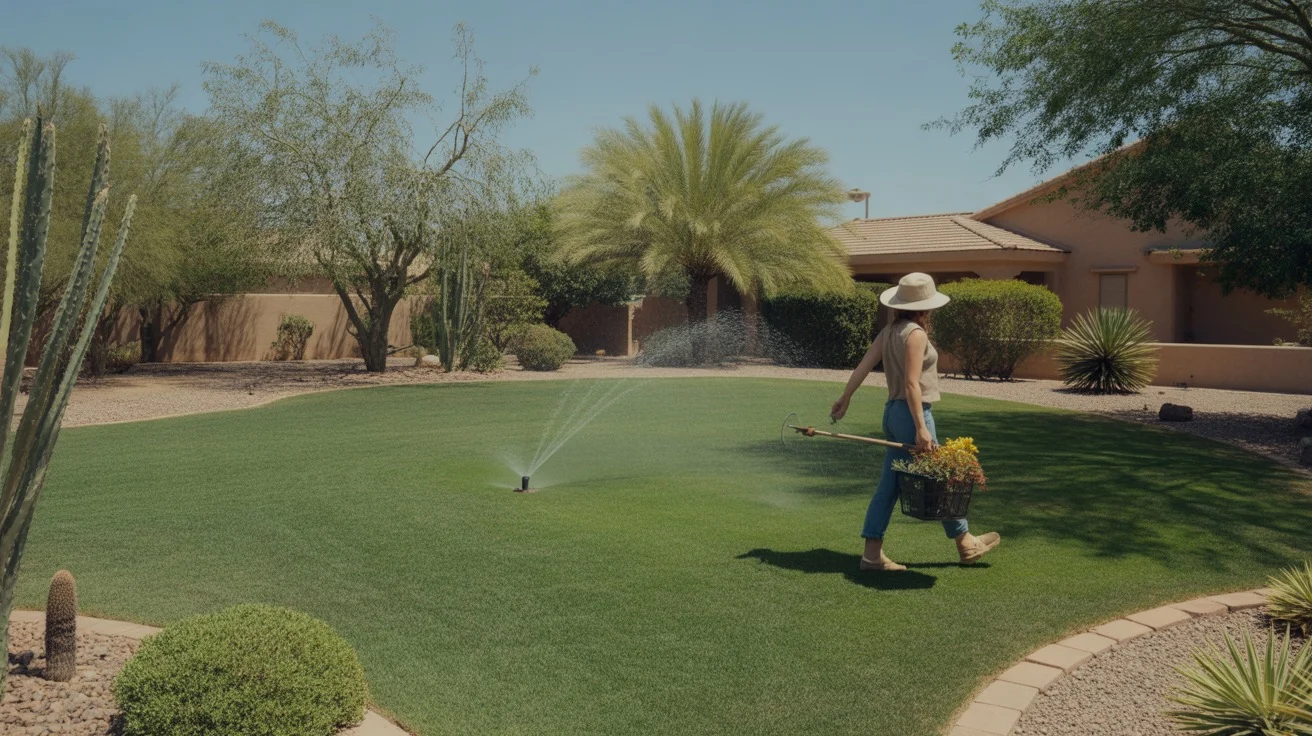
Not all grass is created equal when it comes to surviving Mesa’s harsh summers. To ensure your lawn stays green and healthy, it’s crucial to select a grass variety that’s well-adapted to our climate and soil conditions. Two of the most popular choices for Mesa lawns are Bermuda grass and zoysia grass.
Bermuda grass is a warm-season turf that’s known for its exceptional heat and drought tolerance. It’s a fast-growing grass that can quickly fill in bare spots and recover from damage. Bermuda grass does best in full sun and can handle heavy foot traffic, making it a great choice for active families and pet owners. However, it does require regular mowing and fertilization to look its best.
Zoysia grass is another warm-season option that’s gaining popularity in Mesa. It’s a slower-growing grass that forms a dense, carpet-like turf once established. Zoysia is highly drought-tolerant and requires less frequent mowing than Bermuda grass. It also tends to stay green longer into the fall and winter months. The trade-off is that zoysia can be slower to establish and may require more patience in the beginning.
Watering Wisely in the Desert Heat
Proper watering is essential for maintaining a healthy summer lawn in Mesa. The key is to water deeply and infrequently, encouraging grass roots to grow deep into the soil where they can access moisture even during dry spells. Aim to give your lawn about 1 inch of water per week, split into 2-3 watering sessions.
The best time to water your Mesa lawn is in the early morning, between 4am and 8am. This allows the grass to absorb the moisture before the heat of the day evaporates it, and gives the blades time to dry out before nightfall, reducing the risk of fungal growth. Avoid watering in the evening, as this can lead to prolonged wetness and disease issues.
Consider investing in a smart irrigation system that adjusts watering based on local weather conditions and soil moisture levels. These systems can help you avoid overwatering and ensure your lawn gets the hydration it needs to thrive. If you prefer to water manually, use a rain gauge or tuna can to measure the amount of water your lawn is receiving, and adjust your sprinklers accordingly.
Mowing for Maximum Resilience
Proper mowing practices can make a big difference in your lawn’s ability to withstand the summer heat. Taller grass blades shade the soil, reducing evaporation and keeping roots cooler. They also have more surface area for photosynthesis, allowing the grass to produce more energy for growth and recovery.
For Bermuda grass, aim to keep your lawn between 1-2 inches tall during the summer months. Zoysia grass can be mowed a bit shorter, around 0.5-1.5 inches. Always use a sharp mower blade to avoid tearing the grass, which can weaken it and make it more susceptible to stress and disease.
When mowing, follow the “one-third rule”: never remove more than one-third of the grass blade height at a time. This means mowing more frequently during peak growing season, but it will help your lawn stay healthier and more resilient. Leave the clippings on the lawn after mowing to return nutrients to the soil and help retain moisture.
Fertilizing for Summer Strength
Feeding your lawn regularly throughout the summer will give it the nutrients it needs to withstand the stress of heat and drought. Choose a fertilizer formulated for warm-season grasses, with a balanced ratio of nitrogen, phosphorus, and potassium (NPK).
Apply fertilizer every 6-8 weeks during the growing season, following the package instructions for application rates. Avoid over-fertilizing, as this can lead to excessive growth and make your lawn more vulnerable to heat and drought stress. If you’re not sure how much fertilizer to use, consider getting a soil test to determine your lawn’s specific nutrient needs.
In addition to regular fertilization, consider applying a summer-specific product like a stress-relieving supplement or soil enhancer. These products often contain amino acids, seaweed extracts, or other ingredients that help grass cope with extreme temperatures and dryness.
Staying Vigilant Against Pests and Disease
Summer’s heat and humidity can create the perfect conditions for lawn pests and diseases to thrive. Keep an eye out for signs of trouble, such as brown patches, wilting grass, or visible insects, and take action quickly to prevent the problem from spreading.
Common summer lawn pests in Mesa include chinch bugs, grubs, and armyworms. These insects feed on grass blades and roots, causing damage that can mimic drought stress or disease. If you suspect an infestation, try using a natural pest control product like neem oil or Bacillus thuringiensis (Bt) before resorting to harsh chemicals.
Fungal diseases like dollar spot and brown patch can also take hold in the summer months, especially if your lawn is overwatered or lacks good air circulation. To prevent fungal growth, avoid watering at night, mow regularly to promote airflow, and consider applying a preventative fungicide if you’ve had issues in the past.
By staying proactive and addressing pest and disease issues early, you can keep your Mesa lawn looking its best all summer long. With a little extra care and attention, you can create a lush, green oasis that defies the desert heat and provides a beautiful, relaxing space for you and your family to enjoy.

